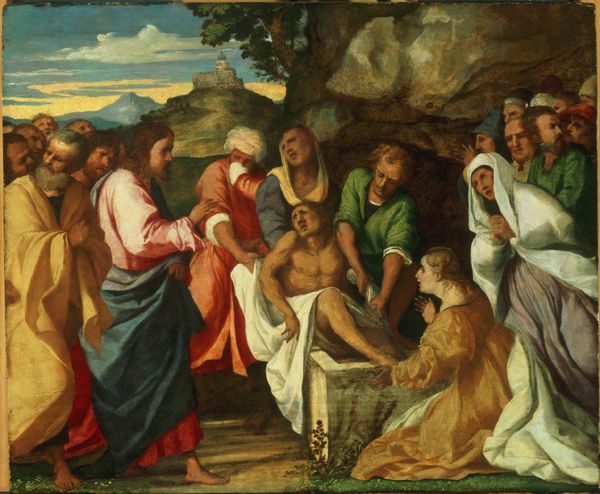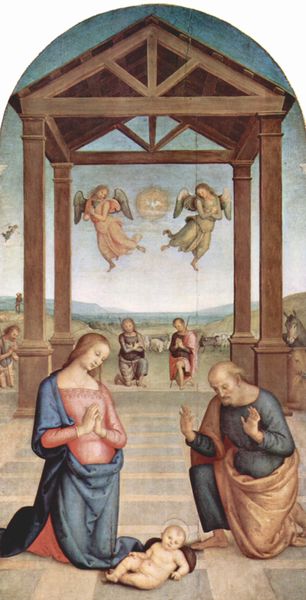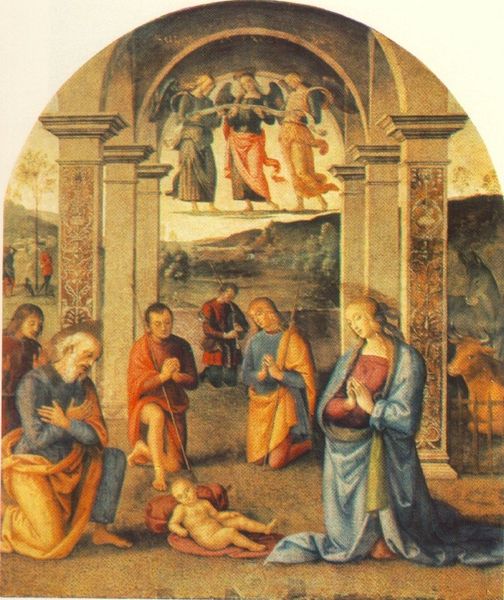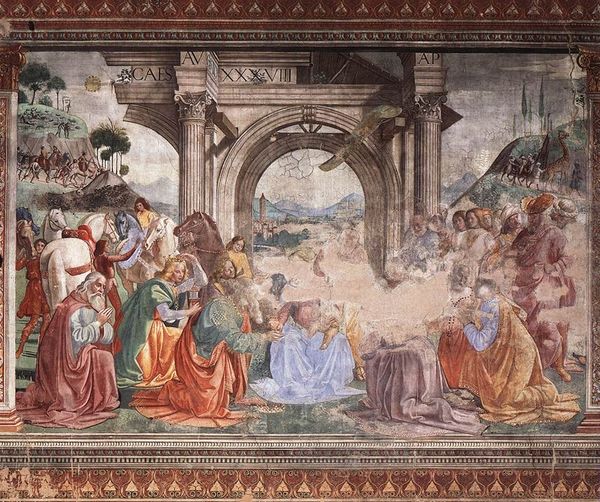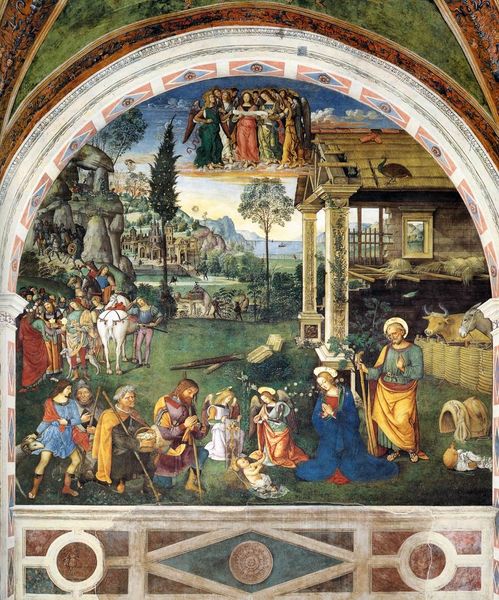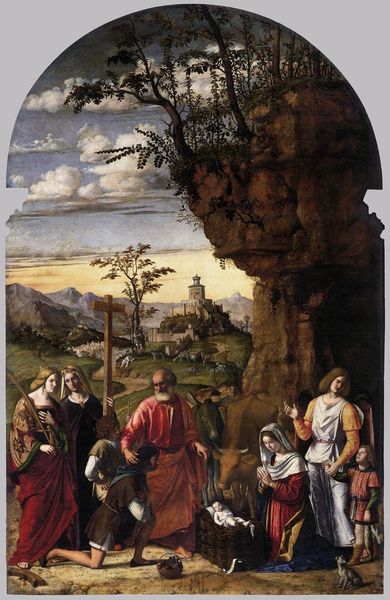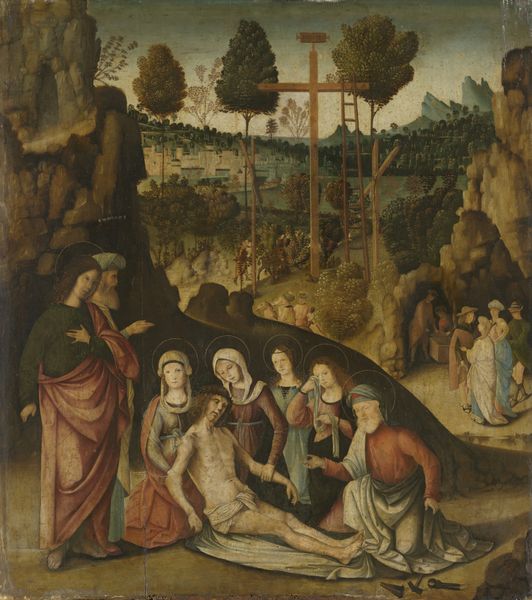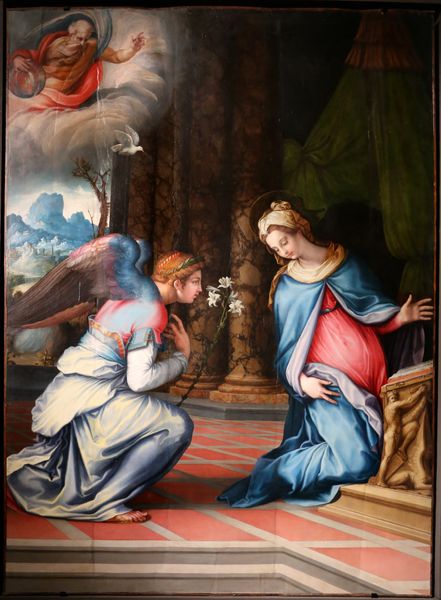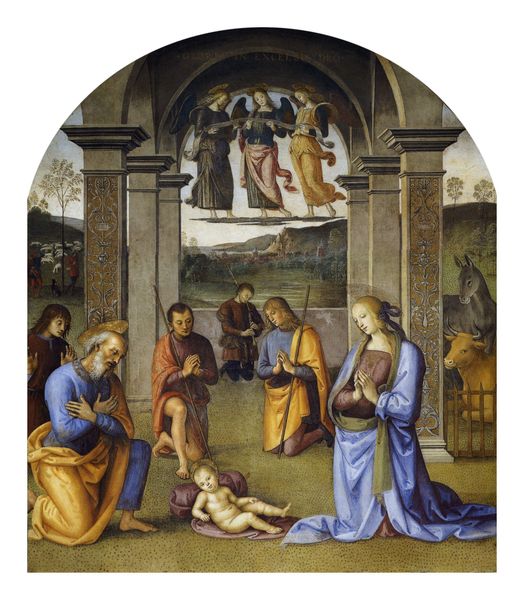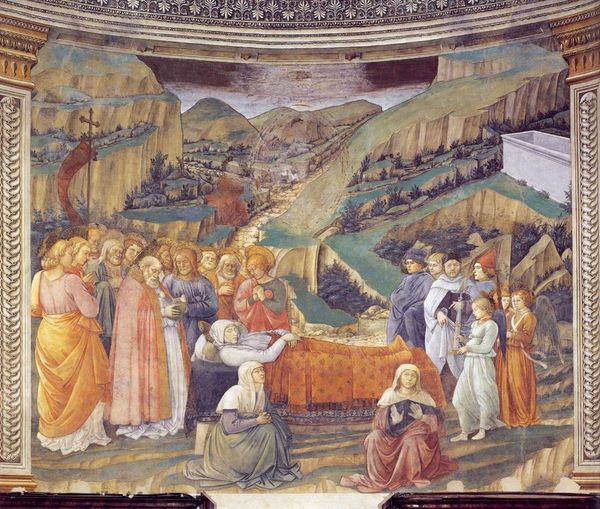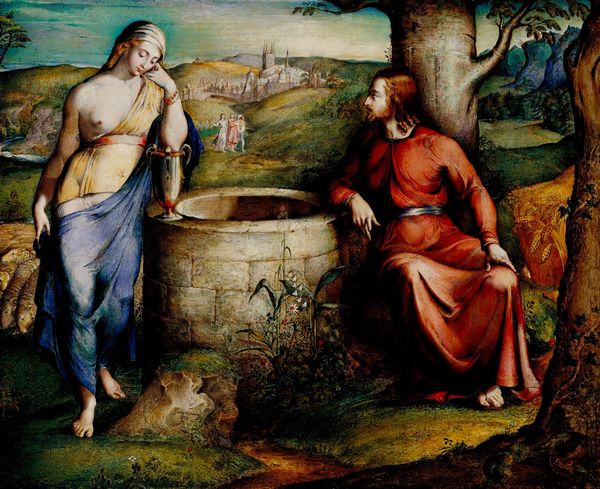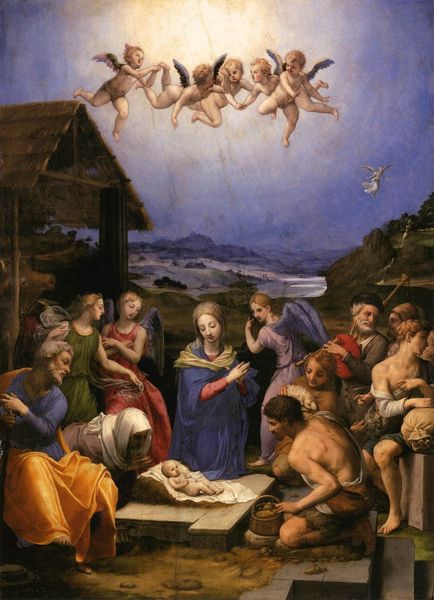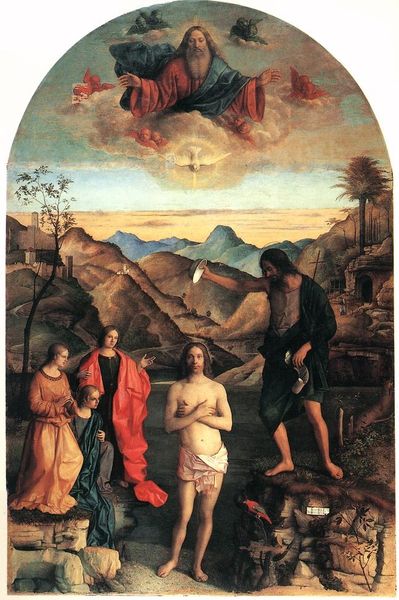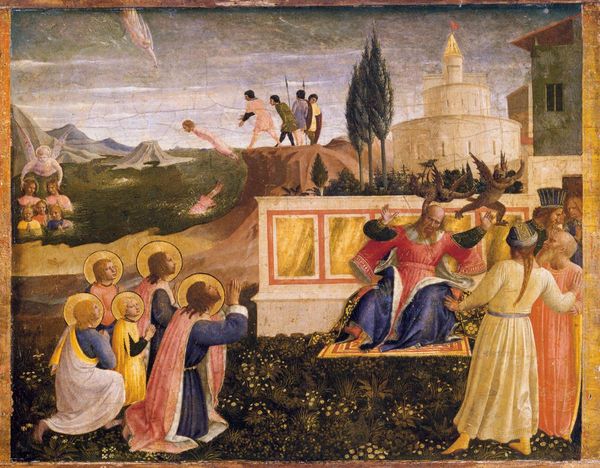
painting, oil-paint, mural
#
narrative-art
#
painting
#
oil-paint
#
landscape
#
figuration
#
oil painting
#
chiaroscuro
#
history-painting
#
academic-art
#
italian-renaissance
#
mural
Copyright: Public domain
Curator: This fresco is Alessandro Allori’s "Christ and the Samaritan Woman at the Well," painted in 1577 for the church of Santa Maria Nuova in Florence. I'm immediately struck by how dreamlike the colors are; almost muted pastels in this narrative scene. It gives it a gentle, ethereal quality, don't you think? Editor: Indeed. It's easy to see Allori embracing both narrative and landscape, though that choice also brings up thoughts about craft— the fresco technique, the very materiality of it. A permanent process to fix pigment onto the plaster of the wall itself. How conscious were the makers of their place in Florence, physically building that image, drop by drop. Curator: Yes, the physical creation of such an image is definitely a vital part of its interpretation. I like to think that this highlights a specific meeting or intersection of public and personal stories: Christ's and that of the Samaritan woman as a means of reminding us that divinity is equally present in every face, no matter how different. I am especially taken with the landscape behind the pair. Is that intended as a specific vista in Florence or the Italian countryside, perhaps? Editor: It might very well be the Florentine vista—it certainly speaks to Allori's place as a local, working under the patronage system. These murals functioned almost as early forms of printed media. Beyond that, they remind viewers, as much then as now, how essential their manual labor has always been to this process. In that sense, frescoes stand out from traditional ‘high art’ mediums like oil, by literally embodying how making means believing. Curator: Well, it’s interesting how this work straddles the high and the low—it brings in landscape as an intimate encounter. Ultimately the artist's material engagement transforms that reality, reminding us that art transforms reality, too, turning plaster, pigment and water into narrative power. The more one dwells upon the work, the more the simple setting transforms into a moment suspended in the vast theater of time itself. Editor: Exactly. To really know Renaissance artwork, we have to dig down and understand what, materially, this artist used to represent faith, place, and labor within their community. Only then do we begin to understand their stories, embedded for centuries in these very walls, this particular mixture.
Comments
No comments
Be the first to comment and join the conversation on the ultimate creative platform.
